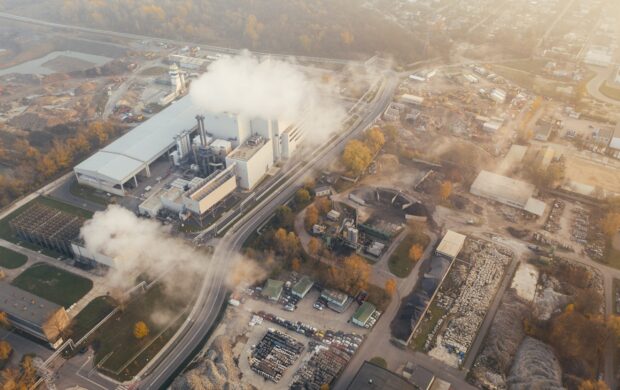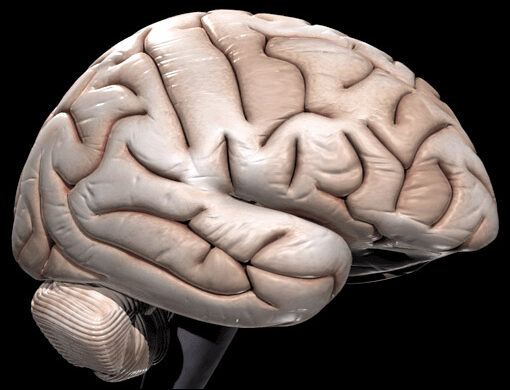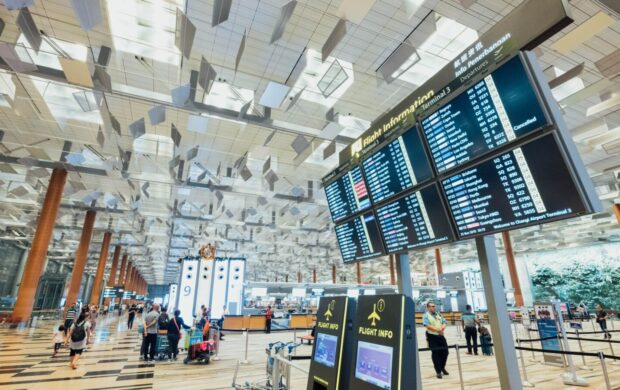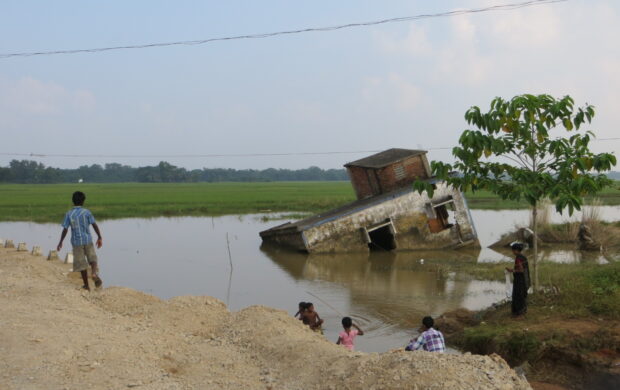Global supply chains are going through a period of rapid transformation. To navigate this landscape, it’s critical to shift our mindset and review the current supply chain models that we rely on. Forum for the Future’s Change Designer, Neil Walker, explores how these changes impact supply chain operations and relationships, and discusses the principles that could form the foundation of a truly future-fit supply chain.
Collapsing harvests. Escalating costs of production. Regulatory pressures. Demands for transparency. Frustrated consumers.
Can supply chains truly be transformed such that they’re fit for a just and regenerative future?
Right now, there are a lot of factors at play with an increased focus on ESG issues, COVID-19 disruptions, labour movements at ports and freight-logistics, and the growing impacts of climate change on manufacturing countries. All of these compounding factors are making the production-to-consumer journey more volatile and unpredictable.
Rather than trying to go back to the way things were before, we need to shift our mindset and approach, beginning by acknowledging that the current supply chain model isn’t sustainable. By doing this, we have the potential to transform our supply chains and create a more resilient, just, and regenerative future for everyone involved.
Here, we do a deep dive on some of the variables that are impacting supply chain operations and relationships. We’ll explore how these changes can actually be an opportunity to transform the global supply chain. And we’ll also discuss some principles that can form the foundation of a much more future-fit supply chain.
The changing face of global supply chains
Regulatory pressure is ramping up in supply chain accountability:
- The upcoming Corporate Social Responsibility Directive (CSRD) from the European Union, aims to put significant pressure on more than 50,000 companies regarding climate and environmental reporting.
- Similarly, greater degrees of visibility and safeguarding are required and the US Uigher Forced Labour Prevention Act is a prime example. It should be no surprise then to see many companies, not least HSBC, a world-leading capital market financial actor, add greenwashing to their risk matrix. HSBC noted changing societal ‘expectations’ and a ‘heightened regulatory focus’ on human rights issues and environmental crimes as being a key drivers for greater ecological and social performance.
Shifting shores:
- Both in response to this regulatory landscape and with a desire to reduce transportation costs and disruption, companies are relocating their supplier bases, often with an eye to ‘nearshore’ production closer to consumers and aiming to “guarantee a better supply of goods”. This is clearly being realised in border areas of Mexico and America, as nearshoring efforts were responsible for half of the logistic marketplace demand in 2022, and the period saw a decade-high in private investment in border towns as American and foreign companies shift production and equipment there.
- A recent report identified 67% of global retailers and manufacturers have changed where they source from, with 58% expecting to continue relocating, primarily to diversify supply away from highly concentrated areas of production to include locations closer to the end market in addition to a wider array of low labour cost countries.
- Finally, as governance, financial and information-related risks are realised, we are seeing a greater desire for visibility over supply chain operations across supplier tiers. Proving and leveraging transparency and traceability is an increasingly important objective for supply chain professionals, whilst platforms that put data in the hands of farmers, such as Farmerline, are growing, democratising knowledge and access to inputs and innovative practices, whilst still supporting improved visibility.
How transformational are these rising pressures on supply chains?
What might such market-led pressures and public-sector-endorsed regulations lead to? Do they lead us toward a future where supply chains – and therefore value chains – are not just sustainable in terms of reducing environmental impact and social costs but also contribute positively to the environment, society, and the economy?
- Regulatory changes are important and can form the foundational layer of change, yet run the risk of contributing to a “zero-harm” mindset. That is, compliance with regional ESG-minded regulations will mean that businesses procuring goods will have eradicated significant social and ecological levels of harm. In complying, there is also therefore an implicit acceptance that businesses will have to play a key role in investing in the necessary means to avoid further ecosystem and societal breakdown.
- This all sounds like a good start. However, we’re seeing different kinds of trends, mainly from civil society actors and research institutions, that clearly support the need for more regenerative and socially-just value chains, with calls from the WWF to see the double, interlinked emergency of climate change and biodiversity loss threatening future generations, and the receding of social progress in recent years leading to a new Global Coalition for Social Justice.
- The public-sector-led regulations, and private-sector actions, alike, are not going far enough to deliver on these just and regenerative needs. Take these examples of nearshoring and supply chain visibility trends, both of which offer a “do no harm” approach. Near-shoring is symptomatic of businesses shifting their operations to reduce disruption to their own supply chains, without necessarily considering what that means for those who worked in the previous production base.
- Making procurement decisions using a ‘just transition’ mindset* would fulfill broader criteria of avoiding negatively impacting businesses and people when transitioning to alternative production bases. Instead, working with existing production tiers to create further resilience and equity rather than simply moving to another region in the name of visibility or convenience, would ensure greater longevity in supplier relationships, and resiliency by replenishing ecological footprint and therefore improve the long-term chances for future success.
A just transition mindset is defined by the ILO as maximising the social and economic opportunities of climate action, while minimising and carefully managing any challenges among all groups impacted.
What might a future supply chain look like?
As William Gibson once quipped: “The future is already here, it’s just unevenly distributed.” And it is possible.
There are those who are transforming their supply chains in ways that are aligned with the principles of a future fit system, or providing the tools to do so. Examples include:
- Unusual collaborations that are emerging to solve some of the largest environmental issues of our time, encouraging knowledge and resource sharing in order to innovate and quickly scale solutions.
- Beyond Good, a confectionary company, has built its chocolate bar production facility in close proximity to the Madagascan farms that produce the cocoa, offering economic opportunities to the local community, and linking the company’s economic prosperity to that of the people who are integral to its products.
- A group of lawyers in the American Bar Association (ABA) have developed a “Buyers Code”, a set of principles and practices which commit to uphold human rights throughout supply chains and if included in contracting, are legally enforceable.
- The application of digital technologies, not as an end in itself, but as contributing to new models. Ralph Lauren’s platform verifying authenticity of their products on secondary market platforms not only contributes to circularity, but will support curbing counterfeit clothing production, an unregulated and often dangerous industry.
So what does this hold for a just and regenerative future?
A recalibration can succinctly capture what such a regenerative system of trade may look like – value networks – may better capture the interdependence and interconnectivity of actors (including consumers, financers, standards a, goods and services and value addition).
We’ve long been exceeding planetary boundaries and we can no longer expect more for less as tier one businesses and consumers. We now need to meaningfully innovate and invest in circular models; improve dialogue and communications to form coalitions across our supply chains in order to successfully and radically decarbonise, improve landscapes and ensure equity across our supply tiers.
The past two years have seen empty shelves in Western supermarkets, countries prohibiting the export of wheat and palm oil to protect local markets, collapsing harvests in several key commodities, and escalating costs of production from agriculture to apparel to plastics.
Companies who expect to be able to relocate their way out of crises are ignoring the very real possibility of a future in which producing regions are completely exhausted (such are the extreme but entirely possible predicted climate scenarios for crops like coffee, cotton and bananas).
It will take a reorienting of the goals of the system, including going beyond compliance with legislation, and creative collaboration to overcome the challenges the global trade system faces to be resilient and future-fit.
Moreover, regeneration in a supply chain context can also mean creating new economic opportunities and value by rethinking the way we design, produce, and consume goods and services. It requires a holistic and collaborative approach that involves all stakeholders in the supply chain, from producers and manufacturers to retailers and consumers. Ultimately, it will involve rewiring our economies and societies to serve both people and the planet.














Join discussion